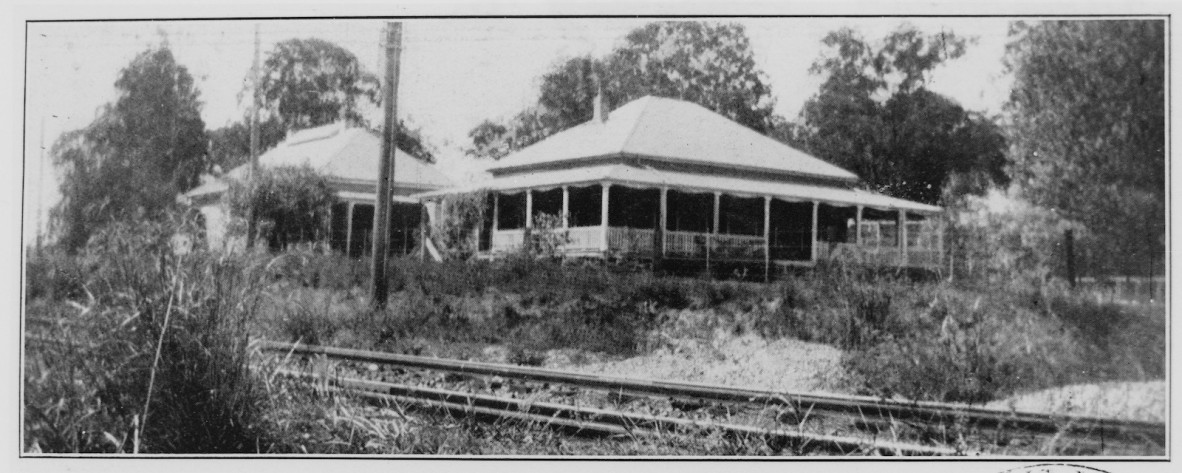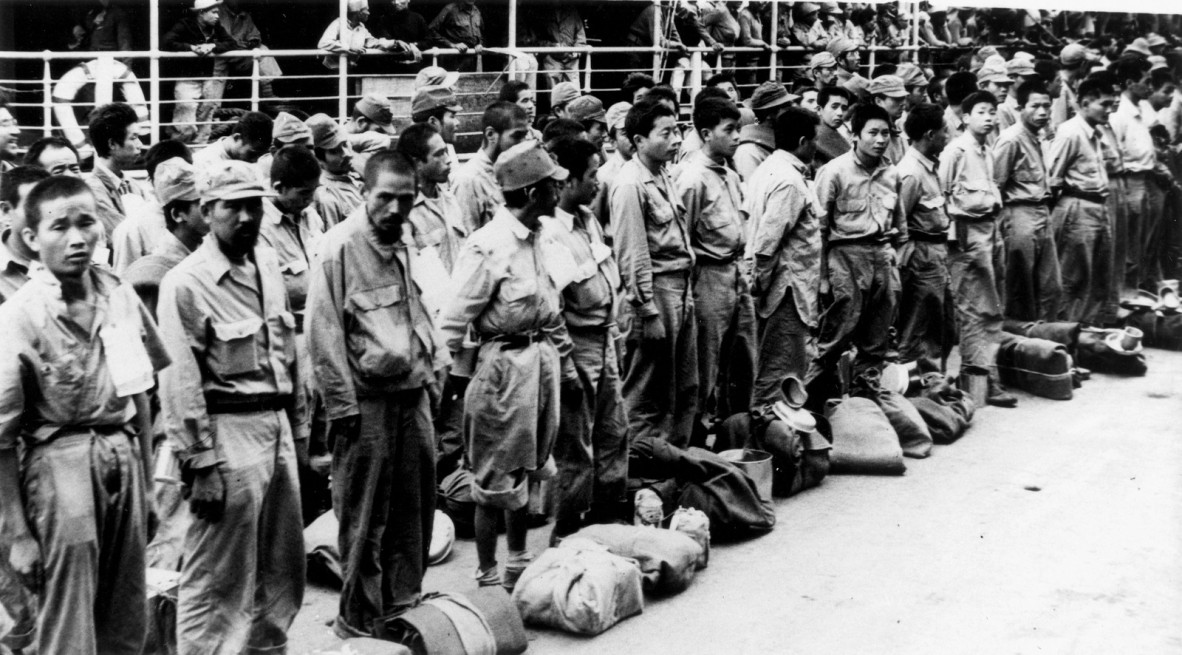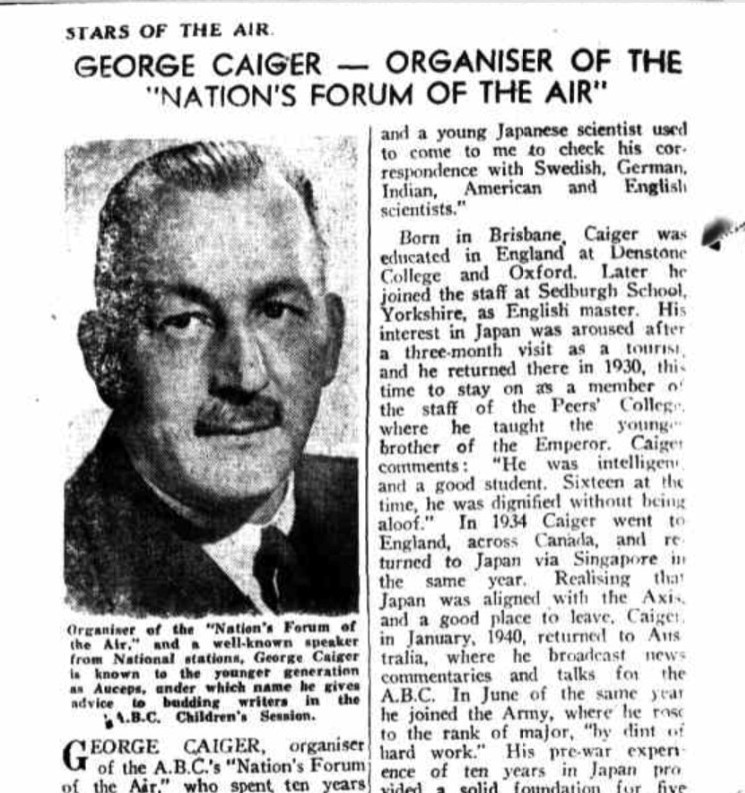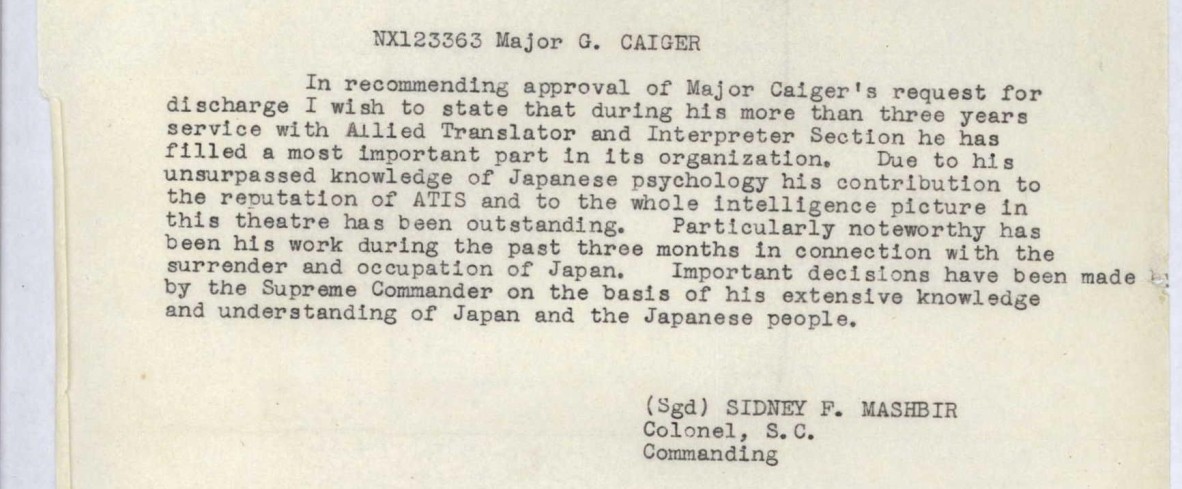International Translation Day: George Caiger and Japanese Translation in World War II
By Greg Corbett, Visitor Services Assistant, Anzac Square Memorial Galleries | 30 September 2022
Major George Caiger. Image: Trove, The Longreach Leader, 8 November 1946, p 24.
30 September is International Translation Day. According to the United Nations, this day offers a chance to show recognition to language professionals for their work in “bringing nations together, facilitating dialogue, understanding and cooperation, contributing to development and strengthening world peace and security”. (United Nations, n.d.) Language professionals can play a vital role in war, translating captured documents, interrogating prisoners of war, persuading civilians that it’s safe to surrender and even interpreting for surrender envoys.
The Allied Translator and Interpreter Section (ATIS) was a joint Australian and US unit tasked with translating captured documents and interrogating Japanese POWs. The ATIS operated out of its headquarters in Indooroopilly, employed thousands of ‘Nisei’ (second-generation Japanese) and screened over 350,000 documents, fully translating 18,000 of them.

Witton House in the grounds of Tighnabruaich a residence in Indooroopilly ca. 1932. John Oxley Library, State Library of Queensland, Negative number: 96019
Plans for the ATIS Camp included the use of Witton House as the Sergeant’s mess, with the officers’ mess and sleeping quarters allocated to the larger Tighnabruaich building. Additionally, there was a five-building POW compound near Witton House, as well as a documents translation building and an interrogation building located near Tighnabruaich. The ATIS headquarters at Indooroopilly was the principal interrogation centre in Australia during the war, and the compound was guarded by troops from the Australian 1st Garrison Battalion.

Japanese prisoners arriving at Brisbane from New Guinea, ca. 1945. John Oxley Library, State Library of Queensland, Negative number: 45729
One of the ATIS’s notable achievements was translating the Z-Plan, a captured document that detailed Japan's defensive plans against Allied attacks on its Pacific territory, including the Mariana Islands, and a strategy for a so-called decisive battle with Allied forces. The ATIS was even active on the front lines by translating documents found on enemy officers and signage warning of hazards such as minefields.
Born in Brisbane in 1903, George Caiger lived in Japan from 1930-1940, where he lectured at Peers’ College in Tokyo. The younger brother of the Emperor was among his students. He then returned to Australia, where he worked as a broadcaster for the ABC. In June 1940 he joined the army, where he served for five and half years, including as the head of the Information Section in the ATIS. When talking with the Sydney Morning Herald about his experience, Caiger offered some fascinating insights into the nature of the work, including how Japanese military terminology was like a language of its own, and how Japanese prisoners of war feared family members receiving word of their capture and regarded themselves as ghosts, excommunicated socially and spiritually from their homeland.

Major George Caiger. Image: Trove, The Longreach Leader, 8 November 1946, p 24.
Caiger served under Colonel Sidney Mashbir, who noted that “his contribution to the reputation of ATIS and to the whole intelligence picture in this theatre has been outstanding.” (NAA: B883, NX123363) At war’s end, Caiger interpreted for surrender envoys in Manila and then spent three months back in Japan as a member of the General Headquarters Staff for the Occupation Forces. Mashbir noted that, “Important decisions have been made by the Supreme Commander (General Douglas MacArthur) on the basis of his extensive knowledge and understanding of Japan and the Japanese people.” (NAA: B883, NX123363)

An excerpt from Major Caiger’s service record. Image: (NAA: B883, NX123363)
He was discharged with the rank of Major. Caiger wrote several books on Japan and was active in the public sphere in the years following the war, writing opinion pieces, appearing on radio and giving public lectures on Japan.
To hear more Queensland stories of service or to learn more about military installations located in Brisbane during World War II, visit Anzac Square Memorial Galleries 10am-4pm Sunday to Friday.
References
- 1945 'AIF Officer Brilliant Jap Interpreter', Army News (Darwin, NT : 1941 - 1946), 29 August, p 3. http://nla.gov.au/nla.news-article47723991
- 1945 'A MacARTHUR SECRET', The West Australian (Perth, WA : 1879 - 1954), 23 August, p 5. http://nla.gov.au/nla.news-article51764817
- 1945 'Secret Service Feats Against Japan', The Sydney Morning Herald (NSW : 1842 - 1954), 30 October, p 2. http://nla.gov.au/nla.news-article17957844
- 1946 '"JAPAN AND THE OCCUPATION"', The Methodist (Sydney, NSW : 1892 - 1954), 27 July, p 8. http://nla.gov.au/nla.news-article155618801
- 1946 'STARS OF THE AIR. GEORGE CAIGER — ORGANISER OF THE "NATION'S FORUM OF THE AIR"', The Longreach Leader (Qld. : 1923 - 1954), 8 November, p 24. http://nla.gov.au/nla.news-article128666261
- 1950 'Cruelty Has A Long History In Japan', The Sydney Morning Herald (NSW: 1842 - 1954), 29 April, p 11. http://nla.gov.au/nla.news-article18158025
- Bradsher, G 2005, 'The Z Plan Story - Japan's 1944 Naval Battle Strategy Drifts into U.S. Hands', Prologue Magazine, Fall 2005, Vol. 37, No. 3, National Archives. https://www.archives.gov/publications/prologue/2005/fall/z-plan-1.html
- Congressional Record 2004, PROCEEDINGS AND DEBATES OF THE 108th CONGRESS, SECOND SESSION, Vol. 150 WASHINGTON, FRIDAY, NOVEMBER 19, 2004 No. 134—Part II. https://www.govinfo.gov/content/pkg/CREC-2004-11-19/pdf/CREC-2004-11-19-bk2.pdf
- Dennis, Grey, Morris et. al. 2009, ‘Allied Translator and Interpreter Section’, The Oxford Companion to Australian Military History (2 ed.), Oxford University Press 2009.
- National Archives of Australia; 2 Echelon, Army Headquarters; B883, Second Australian Imperial Force Personnel Dossiers, 1939-1947; NX123363, 1939 – 1948.
- Queensland Government 2014, 'Allied Translator and Interpreter Section (ATIS); Australian 1st Battalion; POW Compound and Interrogation Centre - 'Tighnabruaich' and Witton Barracks', Queensland WWII Historic Places. https://www.ww2places.qld.gov.au/place?id=786
- United Nations, n.d., International Translation Day, UN.org. https://www.un.org/en/observances/international-translation-day
More Information
Anzac Square Memorial Galleries - https://www.anzacsquare.qld.gov.au/
Library membership - https://www.slq.qld.gov.au/get-involved/become-member
State Library opening hours - https://www.slq.qld.gov.au/plan-my-visit/hours-transport-access/opening-hours
Comments
Your email address will not be published.
We welcome relevant, respectful comments.